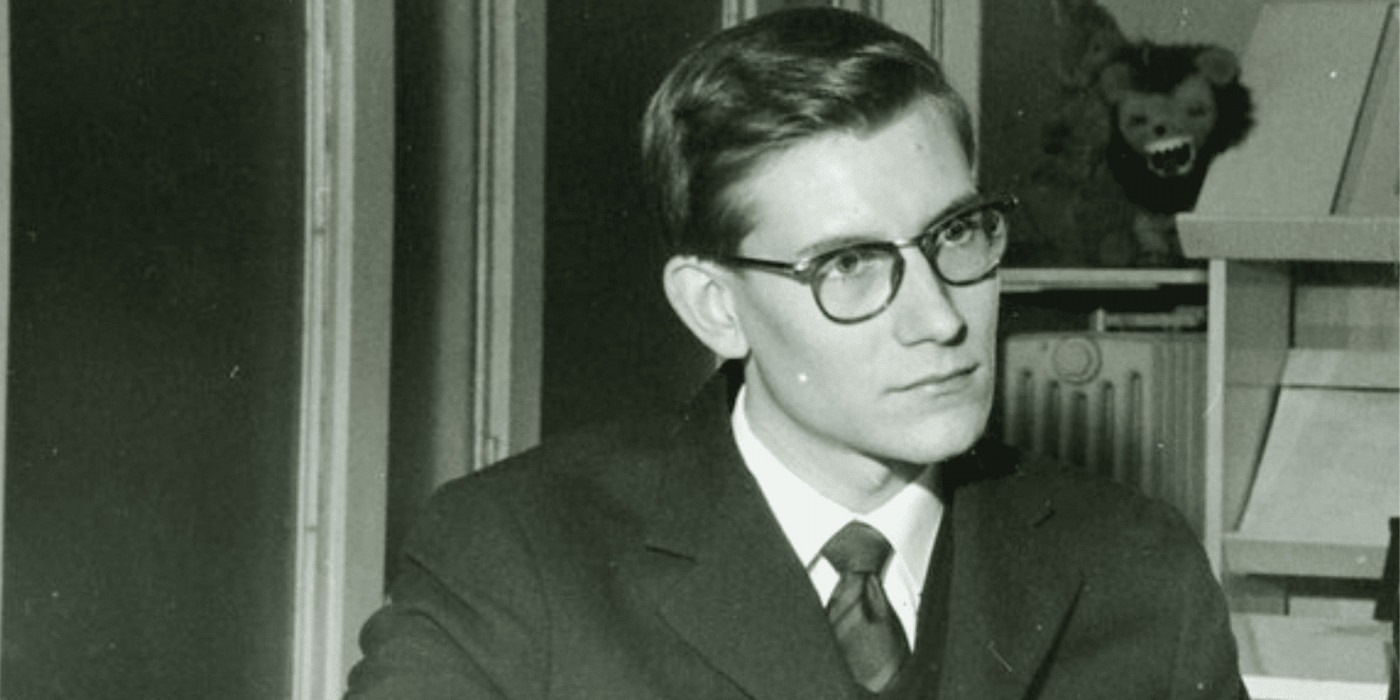Couture Culture: Yves Saint Laurent
If you successfully follow the dust-orange trails that criss-cross through the souks of Marrakesh, embracing the sights, sounds, and smells with certain joie de vivre, until you have left the walls of the Medina, you may stumble upon Le Jardin Majorelle. In fact, it is pretty hard to miss. With striking cobalt blue buildings rising out of an oasis of orange trees and towering palms, the garden is a place of vivacity, tranquillity, and inspiration, and it is located on Rue Yves Saint Laurent.
In 1966, the iconic designer, Yves Saint Laurent, and his partner, Pierre Bergé, made their first trip to Morocco. Quickly, they fell in love with the country and all its vibrancy, and they bought their first house, Dar el-Hanch, or the ‘Snake’s House’, in the Medina. They later acquired that striking cobalt blue villa in Le Jardin Majorelle, which Yves Saint Laurent would return to twice a year, in December and June, to design his celebrated collections.
But before those artistic retreats, where Saint Laurent could bask in Morocco’s rainbow of potential, he was simply a student.
Saint Laurent was the clear successor to the fashion house, and was named artistic director of Dior, aged just 21
Yet, it was clear that, as an aspiring couturier, at the Ècole de la Chambre Syndicale de la Haute Couture, Saint Laurent had the talent, and importantly, the contacts, to leap ahead in his career. After a meeting with his father’s contact, Michel de Brunhoff, editor-in-chief of Vogue (Paris), in 1955, in which Saint Laurent showcased some of his recent sketches, he was put in touch with Christian Dior, who immediately hired the blossoming designer.
During his Dior years, Saint Laurent was entrusted with everything from sketching and fittings, to even helping make several haute couture dresses himself. Here, he discovered the intimate workings of couturial life and the secret to making it a success. So, two years later, when Dior suffered a heart attack and died, Saint Laurent was the clear successor to the fashion house, and was named artistic director of Dior, aged just 21.
His first collection, which was designed in just a few months, with Saint Laurent preparing over 600 sketches in 15 days, was met with acclaim. The press could only praise the ‘little prince of fashion’ and he would go on to design six other successful collections for Dior between 1958 and 1960.
After a brief and reluctant stint in the French Army, during the Algerian War, serving for only 20 days before being admitted to a military hospital for stress, Saint Laurent was fired from Dior.
Yet, this proved to be opportune. With his release from hospital, and a successful lawsuit against Dior for breach of contract, Saint Laurent, with the support of Pierre Bergé, stepped out from Dior’s shadow and into the light of his very own success, opening his fashion house Yves Saint Laurent, or YSL. Here, he would prove himself as a fashion great, and brilliant artist. But as a promoter of the avant-garde, he was essential.
Take the way he revolutionised women’s fashion: while suits for women had been ‘done’ before his time, with Coco Chanel offering women the freedom of trousers, Saint Laurent spearheaded rebellion and shouldered controversy, ushering in an era of menswear for women that had coolness embedded in its DNA. Debuting Le Smoking tuxedo in 1966, Saint Laurent infused androgyny and glamour in a way that shook the status quo: American socialite, Nan Kempner, was famously turned away from Le Côte Basque in New York for daring to wear her YSL tuxedo suit.
He was among the first to place art on the runway, and his designs into galleries
Not content with only just threatening the status quo, Saint Laurent also introduced sheer blouses and tops into his fashion formula, arguably in the hopes of doing away with the status quo entirely. By embracing the 60s sexual revolution, creating sex appeal without vulgarity, and making the case not for exhibitionism but equality between the sexes, Saint Laurent harnessed sensual yet sophisticated styles with unparalleled vision.
Perhaps, the only people that could threaten such vision, such artistry, were the artists themselves. But Saint Laurent had even that ground covered. He was among the first to place art on the runway, and his designs into galleries. For his Spring-Summer 1988 collection, he paid tribute to Vincent Van Gogh by recreating Irises and Sunflowers on jackets. His later collections would feature the work of Andy Warhol, Henri Matisse, Pablo Picasso, and Piet Mondrian, showcasing his knack for unorthodox world-fusing, and a playfulness that allowed him to continue creating collections until 2002.
But it wasn’t all play. As with the almost feminist undertones in his collections, with his sheer shirts and suits, Saint Laurent knew the power of a message. Like the message he delivered with regards to diversity. As one of the first designers to put women of colour on the runway, working regularly with Iman, Dalma Callado, and Rebecca Ayoko, Saint Laurent took the first steps to champion diversity. Reflecting on his death, Naomi Campbell told Vogue: “My first Vogue cover ever was because of this man. Because when I said to him ‘Yves, they won’t give me a French Vogue cover, they won’t put a black girl on the cover’ and he was like ‘I’ll take care of that,’ and he did.”
And so, the legacy of Yves Saint Laurent takes many forms. For Dior, he was a protégé. For the French Army, incompetent. As a designer, he was success personified. And in Le Jardin Majorelle, you realise he was also a man who loved Morocco.

Comments